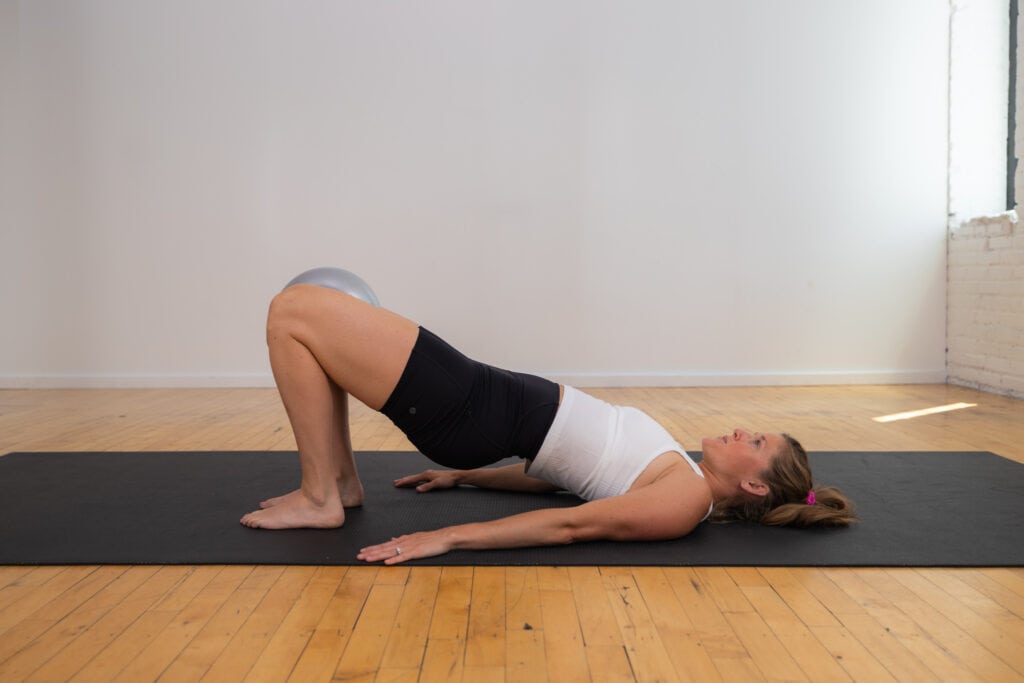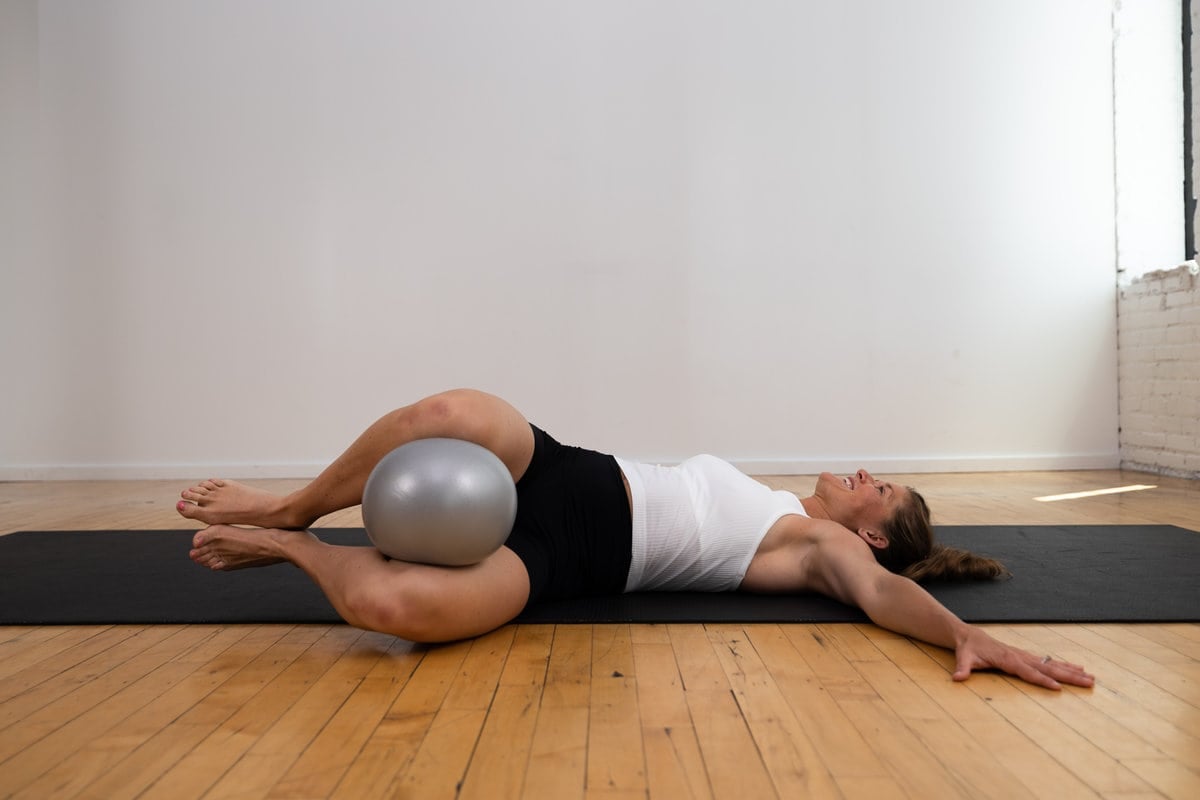 Buy Now →
Buy Now → 

5 of the BEST Beginner Pilates Exercises for healing Diastasis Recti! Add this to your workout routine to repair abdominal separation, strengthen the pelvic floor, and rebuild your abs after baby. This ab workout uses a pilates sponge ball to help engage the transverse abdominal muscles but you can substitute a kids squishy ball or throw pillow if you don’t have one available.
One of my biggest frustrations with postpartum ab workouts is that they aren’t the most exciting. Although I know they’re important, let’s be honest – doing the same moves over and over again for weeks gets old pretty quick.
So we teamed up with my pelvic floor physical therapist (Dr. Sari Abelson PT, DPT) to develop a series of diastasis recti workouts; mixing up the intensity, moves and equipment used to keep things interesting.
We’ve preciously shared a beginner no equipment ab repair and an advanced no equipment ab repair workout to start repairing diastasis recti.
Today’s workout mixes it up by adding in a pilates ball (or throw pillow). This is one of my favorite tools to help make the mind-muscle connection necessary to start repairing diastasis recti or for any beginners looking to build foundational core strength.

Diastasis recti is common in women who have experienced pregnancy. Diastasis recti occurs when the rectus abdominis muscles (six-pack ab muscles) and linea alba (connective tissue) separate as your belly grows during pregnancy. This abdominal separation can range from mild to severe.
Pilates workouts are particularly well-suited for diastasis recti because they are naturally low impact and focus on activating and strengthening all the muscles related to your core. This involves the transverse abdominals, pelvic floor muscles, hips and glutes.
Every postpartum recovery experience is different. I personally started doing these pilates for diastasis recti exercises around 2 weeks postpartum. Start where you are and do what you can! Maybe you start by performing the first three exercises for 20-30 seconds, rest and repeat. You can always work up to performing these exercises for 40 seconds.
If it’s an option available to you, I recommend this to everyone who’s been through a pregnancy. I learned so much about my body from my sessions with Dr. Sari (Motion MN). Outside of diastasis recti, other reasons to see a pelvic floor PT include symptoms like bladder control/urinary incontinence or fecal incontinence, urinary or fecal urgency, heaviness/pressure, pain or fear with return to intercourse, constipation or issues with bowel movements, or just wanting guidance with return to exercise.
The American College of Obstetricians and Gynecologists (ACOG) says that postpartum exercise can strengthen abdominal muscles, boost energy, relieve stress, promote better sleep and may help prevent mood swings, postpartum depression and anxiety or the “baby blues”.

Rebuild your core with 5 BEGINNER pilates ab exercises you can do at home to heal diastasis recti.
These beginner pilates exercises are specifically designed to heal diastasis recti, strengthen the pelvic floor and glutes, and rebuild your abs after baby.
Add this diastasis recti workout to your postpartum workout routine as you feel capable, starting with 1-2 times a week and scaling up to 3-4 times a week.
A pilates ball. You can also use a kids squishy ball or a throw pillow if you don’t have a pilates ball available.

Follow along with the guided BEGINNER Pilates Ab Exercises on YouTube, led by certified personal trainer and fitness instructor, Lindsey Bomgren.
Your Workout Looks Like This:

Targets: The deep transverse abdominal muscles (TVA) and pelvic floor muscles. These muscles support your internal organs, your inter-abdominal pressure system, and provide stability and mobility of your lower spine.

Modification: Keep feet planted on the floor to reduce intensity.
Targets: Transverse abdomen (deep core muscles below your rectus abdominis muscle or six pack ab muscles), lower abs, inner thighs and hip flexors.

Modification: Reduce range of motion of your legs and arms to reduce the intensity of this exercise.
Targets: Deep transverse abdominal muscles (TVA), rectus abdominis muscle, lower abs, chest, shoulders and hips.

Modification: Reduce range of motion, keeping knees bent rather than extending fully.
Targets: Obliques (muscles along the sides of your torso), lower abs and hip flexors.

Modification: Reduce range of motion of your legs to reduce the intensity of this exercise.
Targets: Glutes, hamstrings, hips and pelvic floor.

 Buy Now →
Buy Now →  Buy Now →
Buy Now → 
This post includes affiliate links. I do earn a commission for products purchased using these links (at no additional cost to you). Thank you for supporting Nourish Move Love, making the content you see on this blog possible.